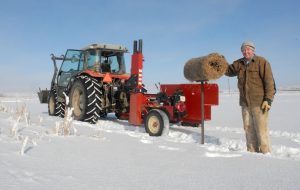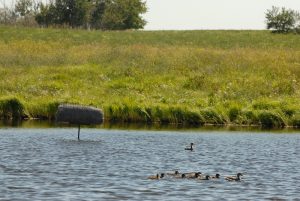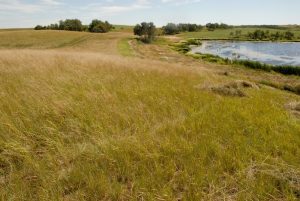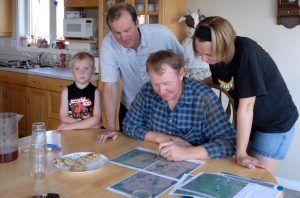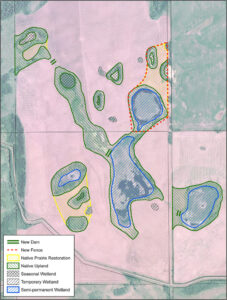ALUS Vermilion River participant Trent Selte is improving water quality and wildlife habitat in many ways by enhancing wetlands on his farm in County of Vermilion River, Alberta.
First and foremost, Selte has retained many small prairie potholes that attract ducks and wildlife to his property. He has also enhanced and created several other potholes on his property.
These wetlands have wildlife-friendly fencing around them that allow a modified grazing regime, to further benefit wildlife on his property.
To complement the existing native prairie, Trent has established new areas of both native and tame grasslands adjacent to wetlands.
In addition to the wetland and grassland components essential for breeding ducks, the Seltes have installed 24 Hen Houses, used by mallard hens. The Selte’s children and friends venture out each winter to maintain the Hen Houses and monitor their use and success.
Ducks are just one of the many beneficaries of the Selte’s stewardship ethic on his ALUS farm.
- ALUS Vermilion River participant Trent Selte ventures out each winter to maintain the henhouses and monitor their use and success.
- On June 13, 2013, the Alberta Minister of Agriculture Verlyn Olson, the Minister of Tourism, Parks and Recreation Richard Starke, and several MLAs attended a workshop and tour in the County of Vermilion River. At Trent Selte’s farm, the dignitaries visited Selte’s ALUS project and installed a Hen House.
- Several henhouses, installed through ALUS, are maintained by the participant and his kids. Henhouses provide safe nesting sites for mallard ducks, greatly enhancing their chances of hatching a clutch of eggs.
- Several wetlands and newly planted native prairie have been fenced in order to enhance nature’s benefits within the fenced area. Wildlife friendly fencing was used for this area, meaning the top strand of wire is a smooth wire vs. barbed. This reduces the chance of injury for deer jumping the fence.
- Oddly shaped cropland areas have been converted to permanent cover, including both tame forages as well as native prairie mixtures. These odd areas are difficult to farm with today’s larger equipment.
- Over home-baked cookies and iced tea, Trent Selte maps out some potential ALUS project sites on aerial photos, with help from his wife, Kim, his son, Parker, and ALUS representative Jim Fisher.
- A plan of Trent Selte’s ALUS project in the County of Vermilion River. It shows the various improvements as well as the existing habitats that have been enrolled in the program.
- Visiting ALUS projects on the Selte farm.

